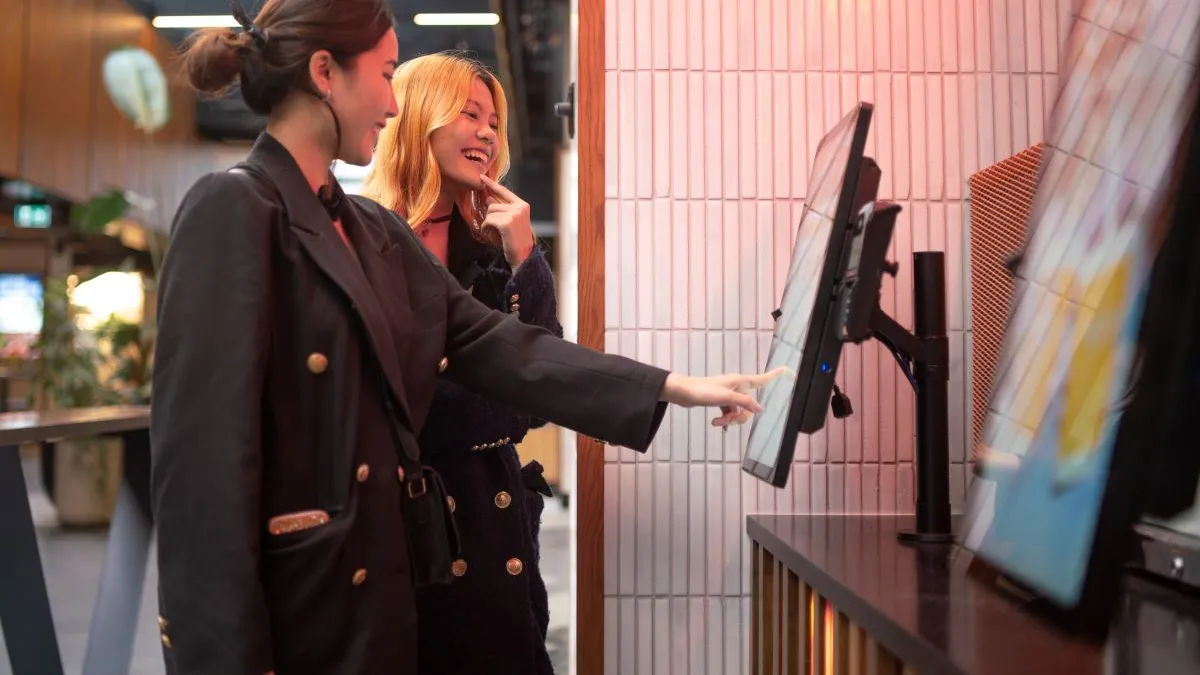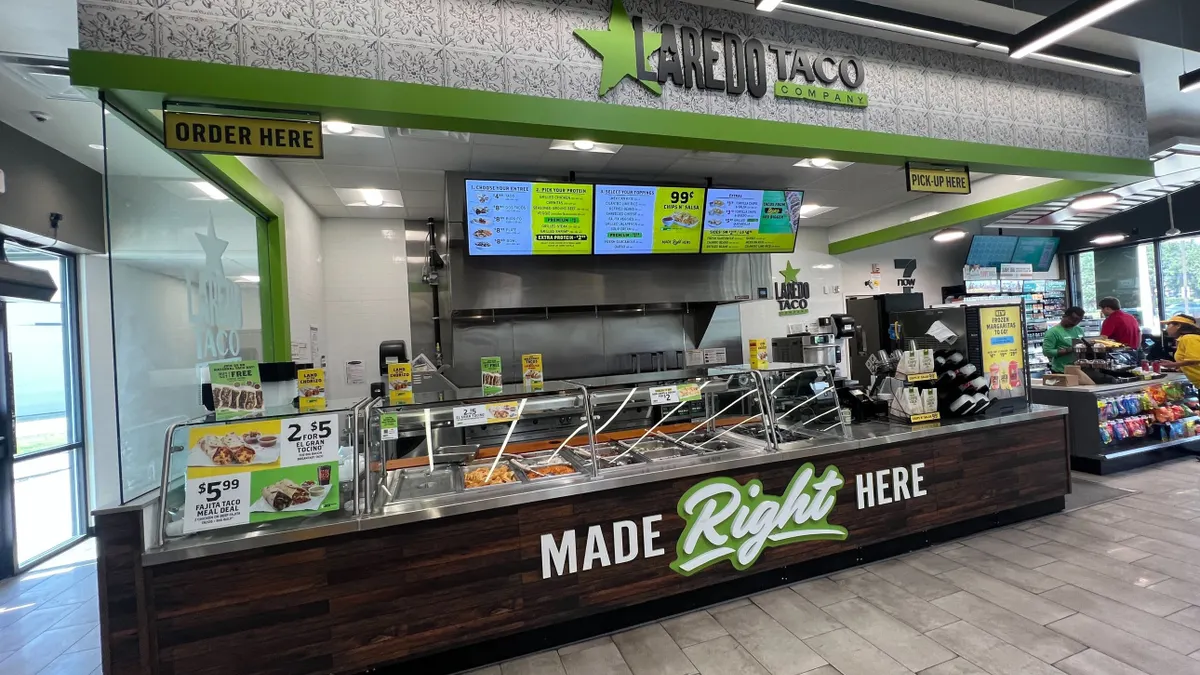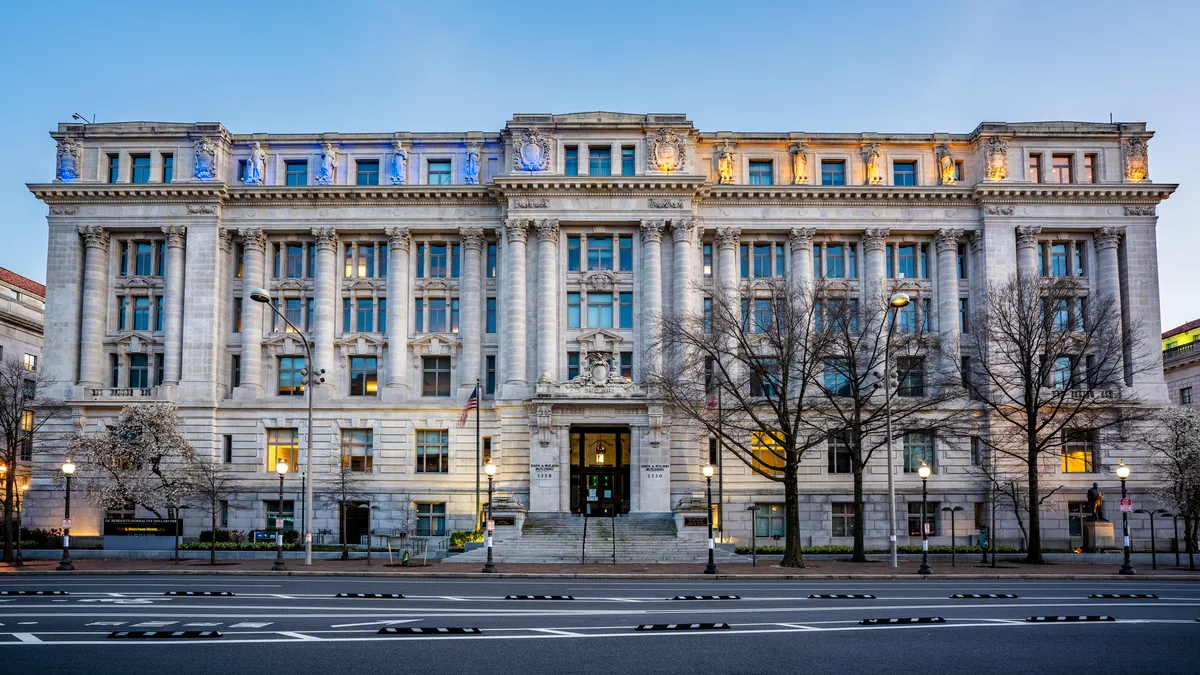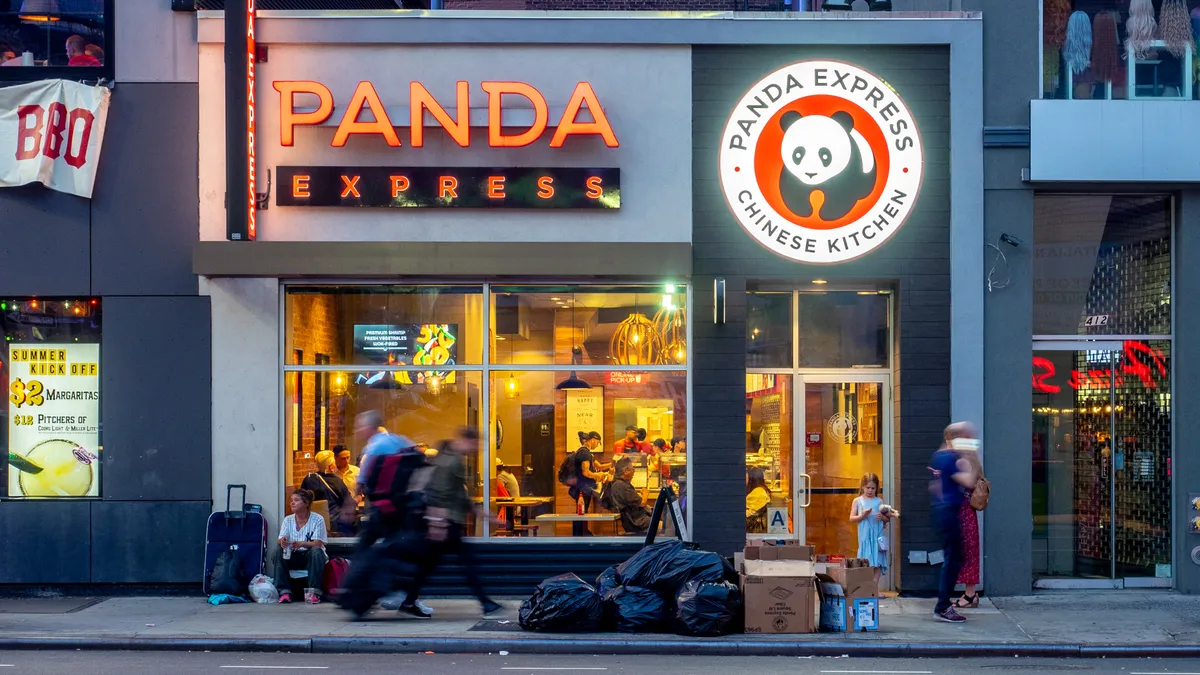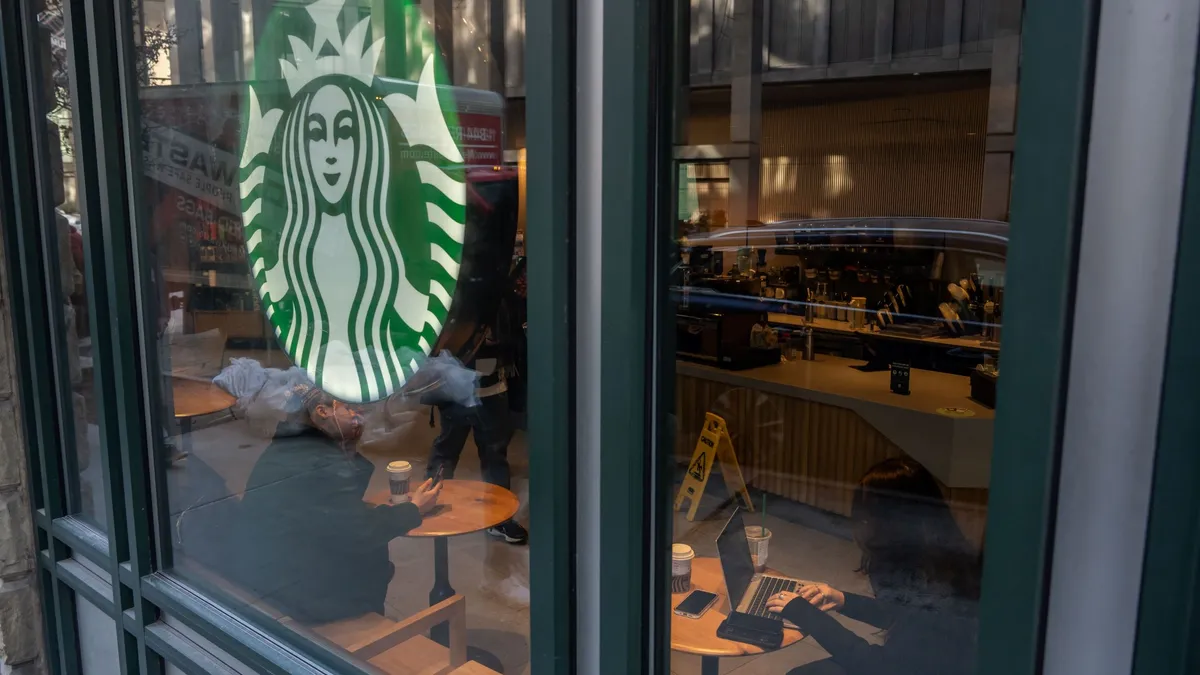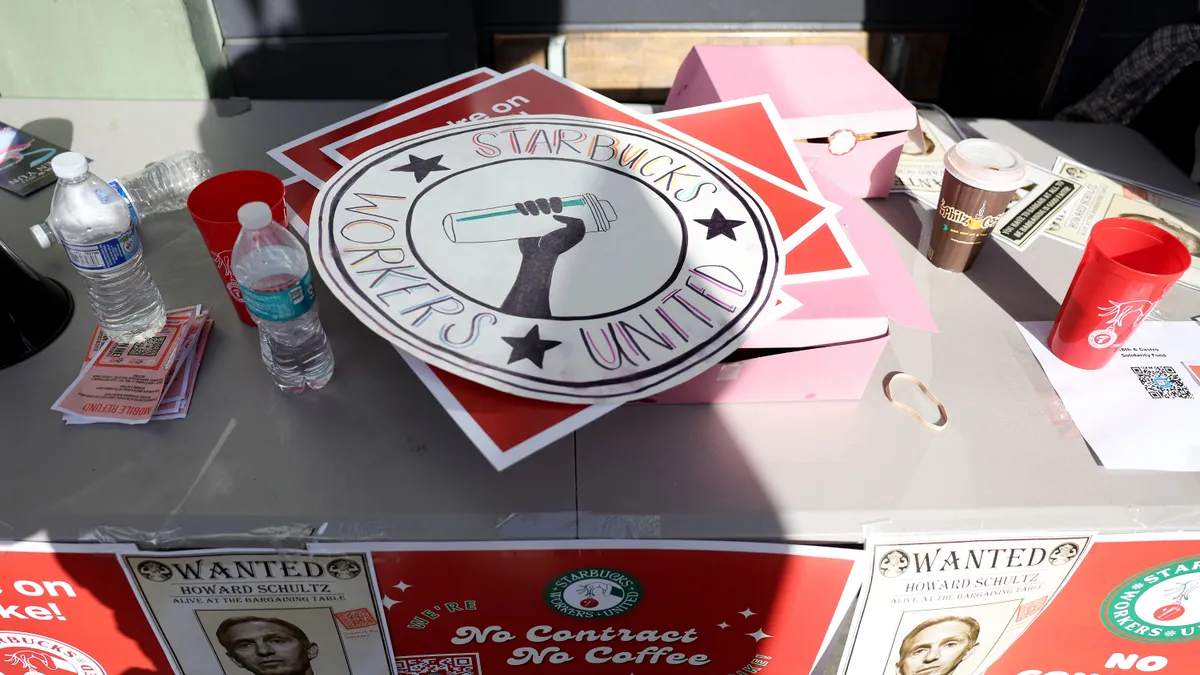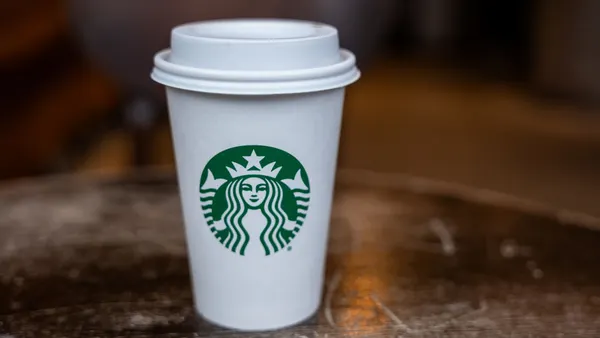CHICAGO — Grubbrr CEO Sam Zietz believes California’s $20 fast food minimum wage has turned in-store ordering kiosks from “a nice-to-have to a need-to-have overnight.”
Brands like Dave’s Hot Chicken are testing the tech in their California units in response to the law, and others are planning to deploy Grubbrr’s kiosks at scale, Zietz said. He claims the company’s kiosks and digital menu boards are used by thousands of unique brands.
Zietz, who spoke with Restaurant Dive at the National Restaurant Association Show, says the technology primarily enables labor reallocation.
The idea that kiosks drive the redeployment, rather than the replacement, of labor is corroborated by Dave’s tests, which didn’t find a significant labor savings. It’s also supported by the fact that restaurant employment has continued to grow in the 10 years since Panera became one of the first major brands to deploy kiosks at scale. Restaurant employment grew from 10.5 million to 12.3 million workers in the last decade, according to Bureau of Labor Statistics data, despite the loss of 5.9 million jobs in the spring of 2020.
But kiosks offer benefits other than changes to labor deployment. Specifically, Zietz said, they consistently upsell. Because consumers feel in control of the ordering process, they end up “self selecting additional items,” he said.
“We're seeing across brands a 12% to 22% uplift [in check],” Zietz said.
Grubbrr’s kiosks can also offer personalized upsell opportunities based on diner information. Restaurants can hard-code the kiosks to offer a specific item, say a fruit cup, any time a customer orders another healthy item, like a salad. Or the kiosks can use a form of artificial intelligence-based data analytics to upsell customers on items related to the one they’re ordering, Zietz said.
Such technology supports in-item upselling, too.
“Maybe I want avocado for 75 cents more, maybe I want extra cheese, maybe I want extra sauce,” Zietz said. Customers can tack on these additions easily, and are less likely to feel time pressure to complete an order quickly than they would with a cashier, according to Zietz.
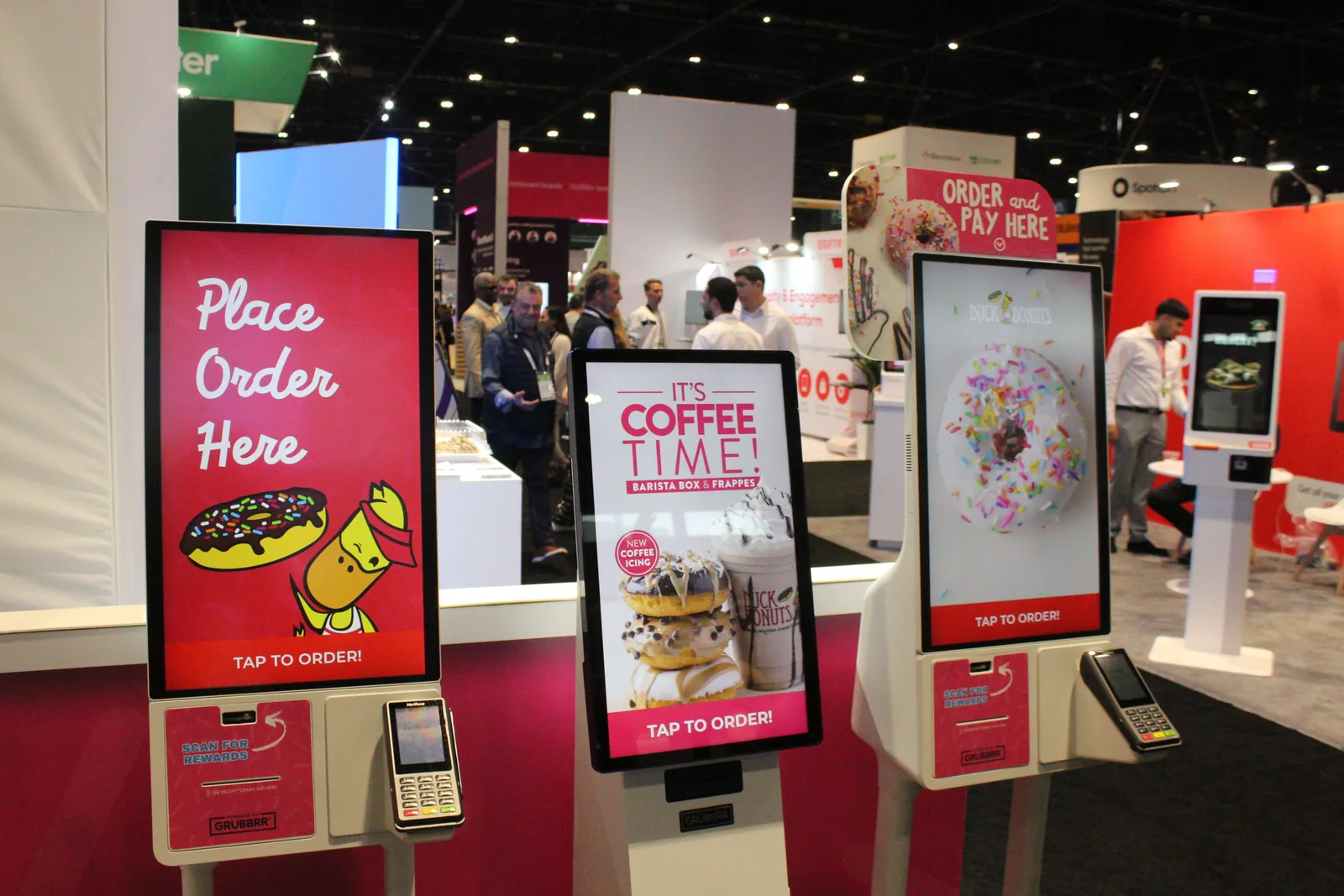
Grubbrr’s use of AI in its kiosks foreshadows a broader transformation of the industry, according to Zietz. Over the next decade, restaurant companies will likely employ automated technologies, including some forms of AI, across a broad range of job roles.
At a discussion at the NRA Show on Monday, Emma Blecker, chief of staff and director of business systems at Boqueria Restaurants, said managerial tasks like scheduling and labor law compliance are likely to be augmented by AI tech, such as a system that identifies when a worker is clocking in too early from their break.
“Managers are never sad about having something they have to do for compliance being augmented by tech,” Blecker said. The NRA Show also featured a broad array of robotic baristas, bussing robots and automated fryers on the exhibitor floor, as it has for several years running.
The industry’s wide-ranging interest in automating parts of various restaurant jobs is likely to lead to an increase in labor productivity, which may lead to an increase in wages, Zietz said.
“You're also starting to see, over the next five to 10 years, more and more automation in food preparation to make the people who are preparing the food be more efficient,” Zietz said. “It's all about making the existing staff more efficient, so that you can pay them a really good wage but you're driving real value, and you're able to continue to provide an affordable solution to the end consumers.”
“You're gonna see wages continue to go up,” Zietz added. “You just got to get more effective.”
There is precedent for the transformation of low-wage, highly labor-intensive industries into high-productivity, high-wage industries through, partially, increased use of machinery.
The link between mechanization and subsequent wage and productivity growth was a key structure in the post-World War II American labor market, especially in basic industries. That bargain began to emerge during the struggles over the transformation of skilled craft workers — iron puddlers then, line cooks today — into semi-skilled machine operatives, managerial workers and industrial day laborers in the early 20th century.
As organized labor continues to push for wage increases in restaurants, it may speed automation, but history suggests that a high-wage, high-productivity future for the QSR could still follow, as Zietz predicts


